Milwaukee Public Museum hired three bilingual educators. Here's why that's important.
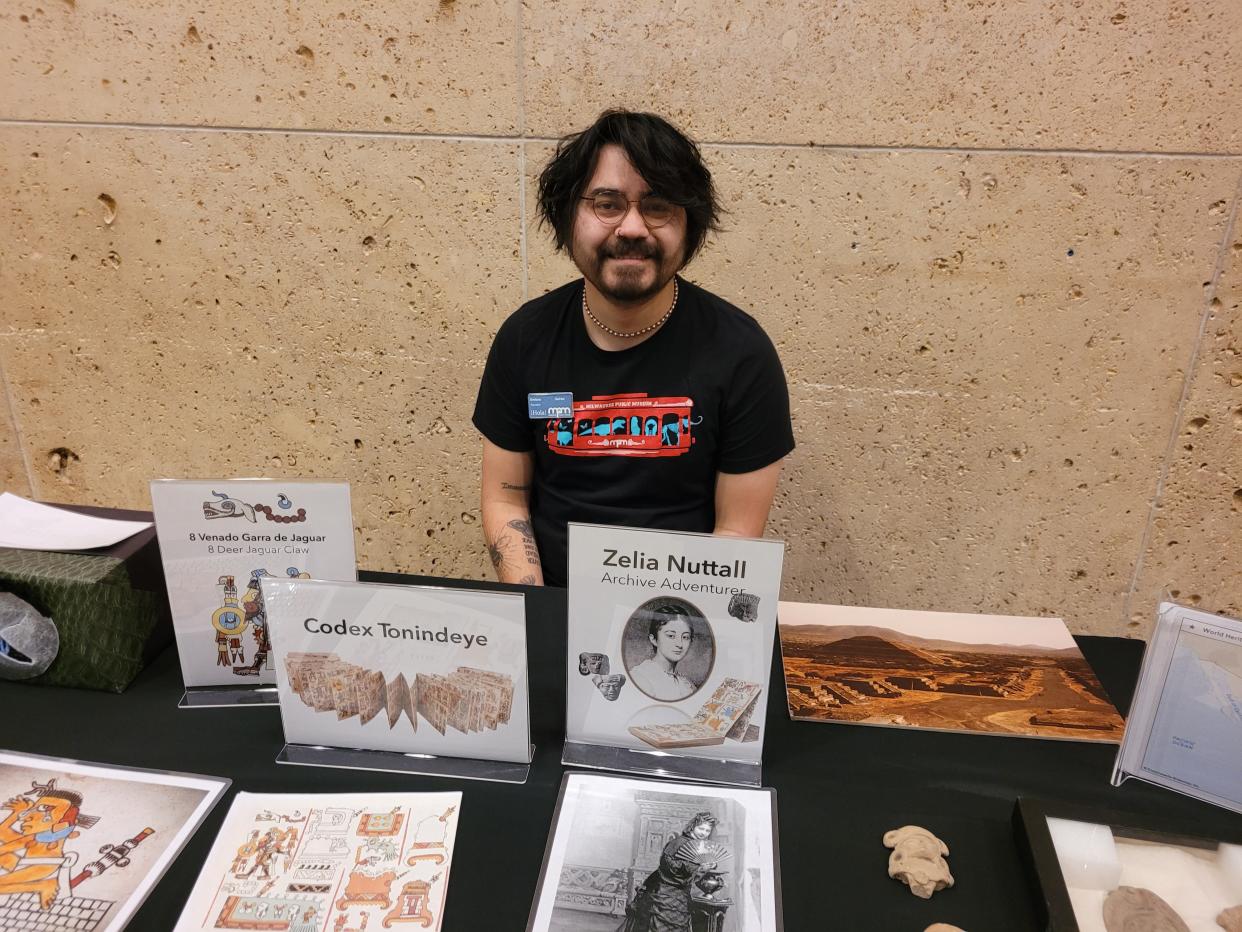
Emiliano Rodriguez is an educator at the Milwaukee Public Museum.
Recently, he was sitting on the first floor of the museum, behind a table filled with photos of anthropologist Zelia Nuttall, selections from Codex Tonindeye, an ancient manuscript discovered in a pre-Aztec Dominican monastery, and re-creations of clay bead figures — all information to educate museum visitors about an ancient city in Mexico.
"I had this picture and map up of the city. A dad with some kids walked by, and I saw that he recognized the picture," Rodriguez said. "But he was reserved even as I saw his kids telling him to ask about the city.
"He hesitantly said something in Spanish, and when I responded, he saw that I spoke Spanish, and all of us had a great conversation about the items on my table and the programs we offer at the museum."
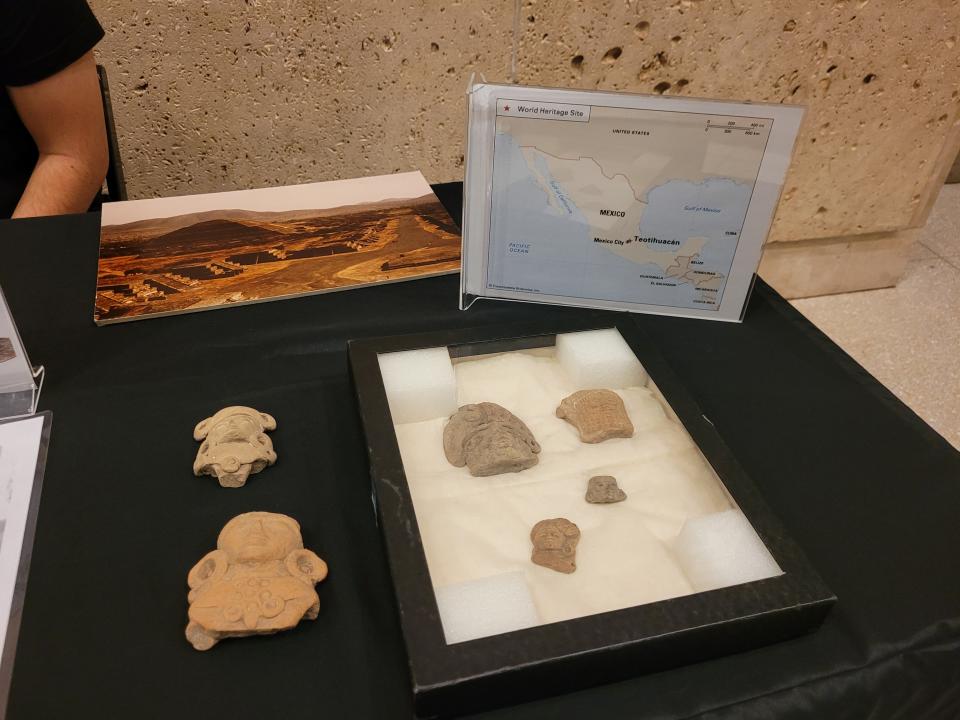
Rodriguez' experience is exactly what MPM's director of education, Adriana Vazquez, hoped would happen when the museum hired three bilingual museum educators for the first time this year.
Vazquez said the education department had done an analysis to see what changes were needed. Dawn Koceja, the museum's community engagement and advocacy officer, said the analysis was part of the museum's two-year IDEA (Inclusivity, Diversity, Equity and Accessibility) strategic planning process.
"Very early on in that analysis, it became clear there was a need for bilingual educators," Vazquez said.
After hiring the three bilingual educators in 2023, Vazquez said five of the 10 education department staff now speak both Spanish and English.
"It's been so impactful for our team," Vazquez said, describing another moment similar to the one Rodriguez experienced.
"One of our bilingual educators, when she started the job, she was observing an English-speaking educator give a program," Vazquez said. "She noticed a family in the back who was not engaging with the program. Their child would approach the table, listen for a bit, then go back to their family to translate.
"The bilingual educator started talking to the child in Spanish about the program, and the child's eyes lit up, and they called to their family, 'Oh, this girl speaks Spanish; you can come forward!'"
Not just bilingual, but also 'bicultural'
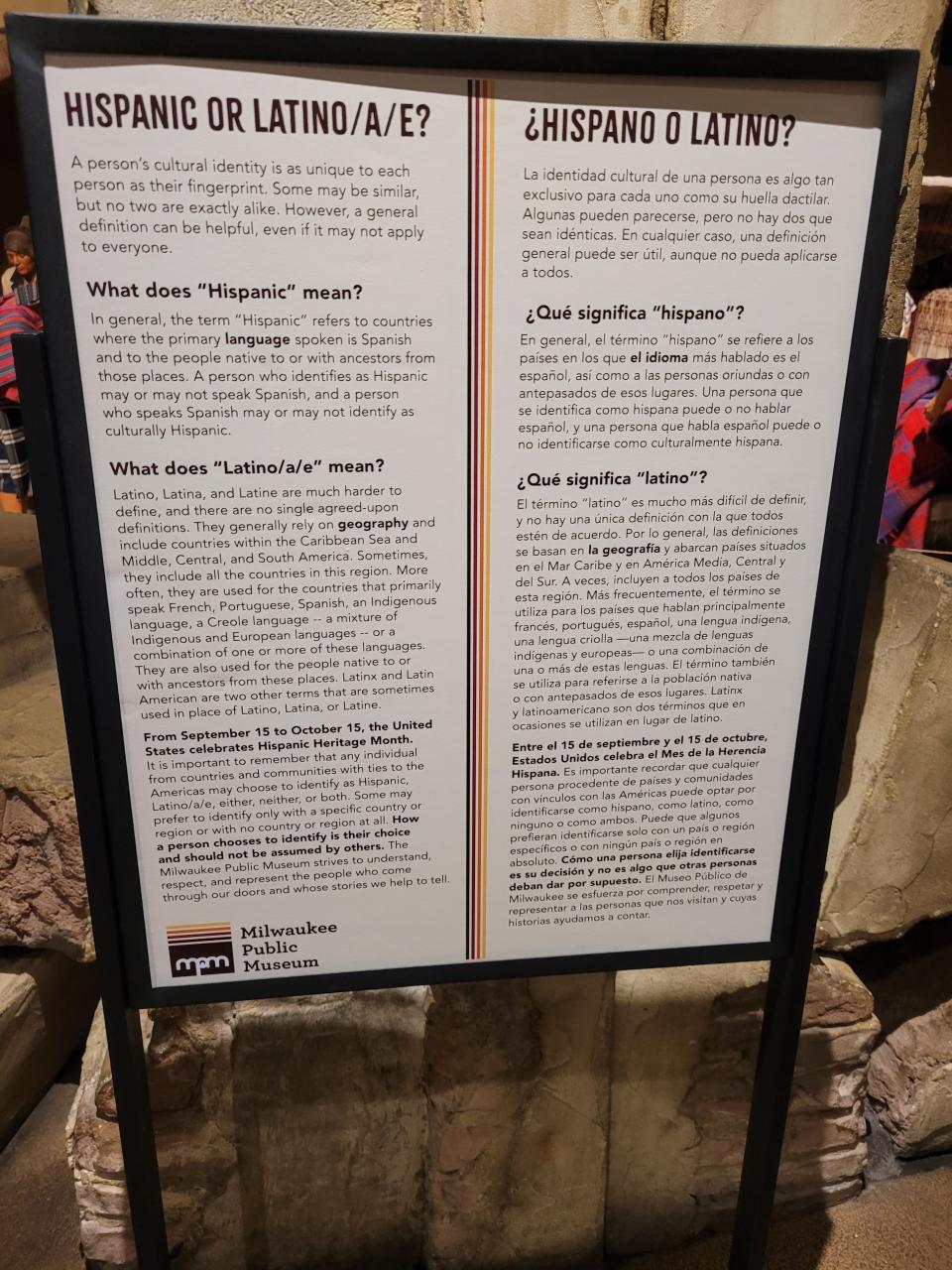
Vazquez said the three bilingual educators are all "heritage speakers" with Mexican backgrounds, making them "bicultural as well as bilingual," something that's important since most Spanish-speaking people in Milwaukee have family that comes from either Mexico or Puerto Rico.
"It's very important not to think of Latinos as a monolith because there are many different cultures within that group," Vazquez said. "And sometimes a Spanish word we would use for one group of people would not be a word another group would understand."
Because so many people on the education staff speak Spanish and are of Mexican descent, they're able to work together to determine which existing programs should be translated to Spanish, propose new programs that would engage Latino visitors, and brainstorm the most understandable ways to translate words into Spanish.
"It's a learning experience," Vazquez said, laughing. "We find ourselves trying to figure out how you say a word like 'owl pellet' in Spanish because the scientific word isn't very accessible or understandable. We all talk together about how a native Spanish speaker would say certain words."
And it's not just the words the education team thinks about; it's the programs themselves. The display about the Codex Tonindeye and the ancient Mexican city came about when an educator with an anthropological background mentioned Zelia Nuttall.
"We all said, 'who is that?'" Vazquez said. "And the educator responded, 'Exactly; that's why we have to talk about her.'"
And the education department added another program to its repertoire after hearing Marquette University history professor Sergio Gonzalez present a lecture about the history of Latino people in Wisconsin. In his lecture, he talked about Raphael Baez, a Mexican musician who moved to Milwaukee and became the first Mexican professor at Marquette.
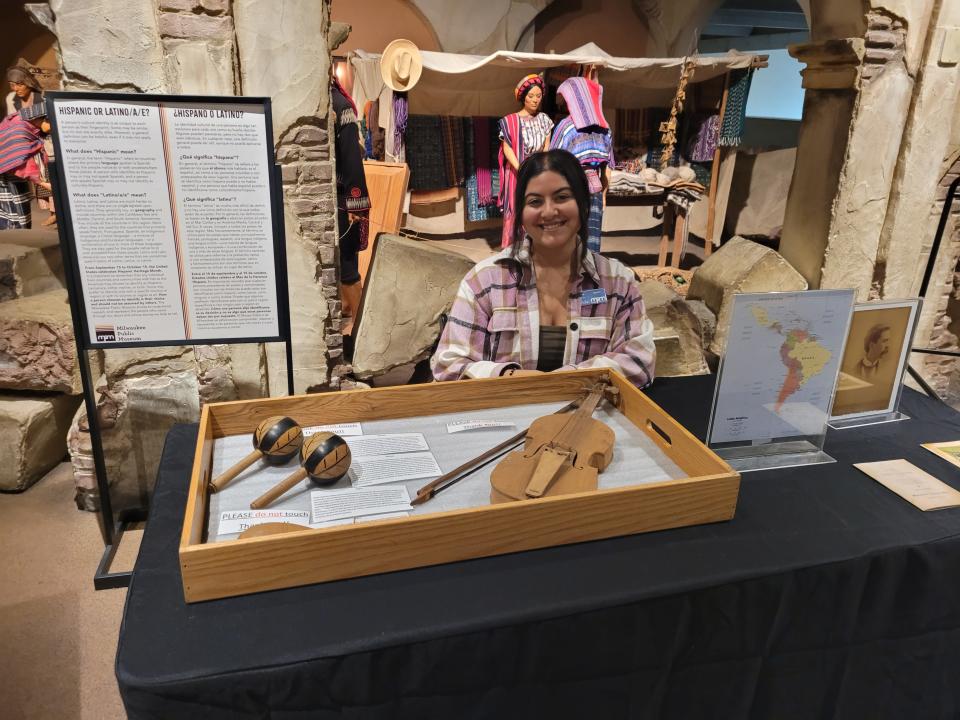
In the new program, educators set up a display of Latin American musical instruments and discuss the history of Latin American music, the influence of Raphael Baez and visitors' favorite current music by Latino artists.
"We've been making a lot of shifts to engage Milwaukee communities who haven't been engaged before," Vazquez said. "And in doing that, we're developing programs that can be used during, say, Hispanic Heritage Month, but also that can be available all year."
Bringing the museum out into Milwaukee communities
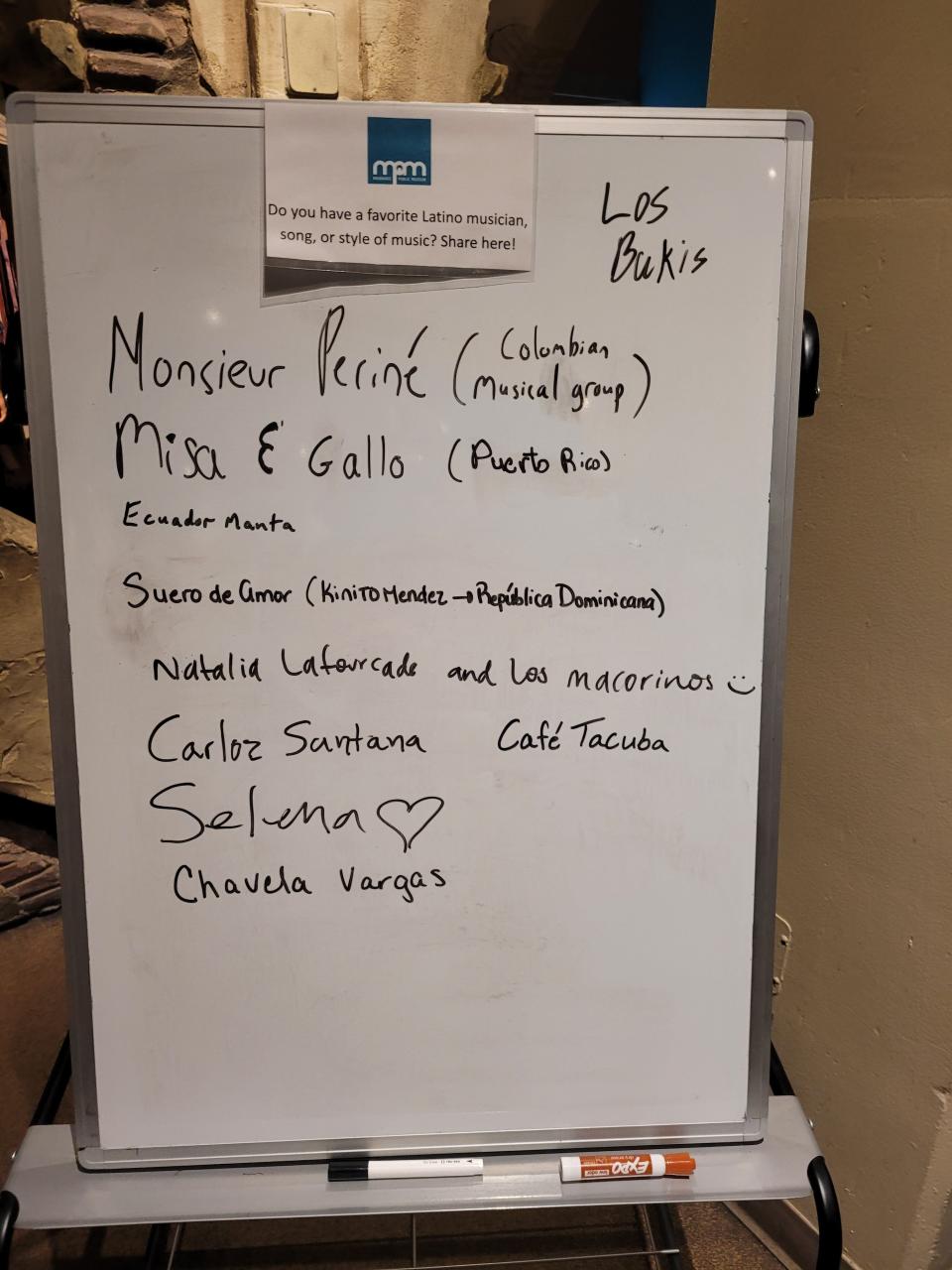
The bilingual educators also allow MPM to provide more accessible programs in their community outreach. In addition to presenting programs to museum visitors several days a week, the educators take their lessons into Milwaukee neighborhoods through visiting schools, retirement centers and community events to teach people about various topics.
Melanie Martinez, one of the new bilingual educators, has also been working on bringing back the museum's early learning classroom, which has been closed the last few years due to the pandemic — this time with the option for preschool classes to be taught in Spanish.
When MPM administrators started talking about hiring bilingual educators, they realized that a key benefit to the program would be increasing the ability of Spanish-speaking people to understand the material as it is meant to be conveyed, rather than going through a layer of translation that may obscure the meaning.
"I realized that when I went to a bilingual school to observe one of our programs before we had hired the educators," Vazquez said. "The kids all spoke Spanish, and the teacher spoke Spanish and English so she had been translating what the educator was saying into Spanish.
"I jumped in to help translate, and I just thought this experience would be much more equitable and accessible if we just delivered it in Spanish in the first place."
The museum is also engaging Latino communities as it continues its IDEA strategic planning process. In spring and summer of 2024, MPM staff will visit neighborhoods on the south side of Milwaukee and form focus groups to determine what people would like to see the museum do more of to engage them in their programming.
MPM staff also plan on using what they learn from those south side residents to engage other populations, hopefully adding bilingual speakers of other backgrounds, such as Hmong, in the future.
"It's very common for children to be translators for their older family members," Vazquez said. "That means that the child may be engaged in the presentation and then have to stop and translate. We want to change things so families can have these experiences all together."
If you're interested in providing feedback to MPM administrators during their strategic planning process, email access@mpm.edu.
This article originally appeared on Milwaukee Journal Sentinel: Milwaukee Public Museum bilingual educators engage Latino visitors

